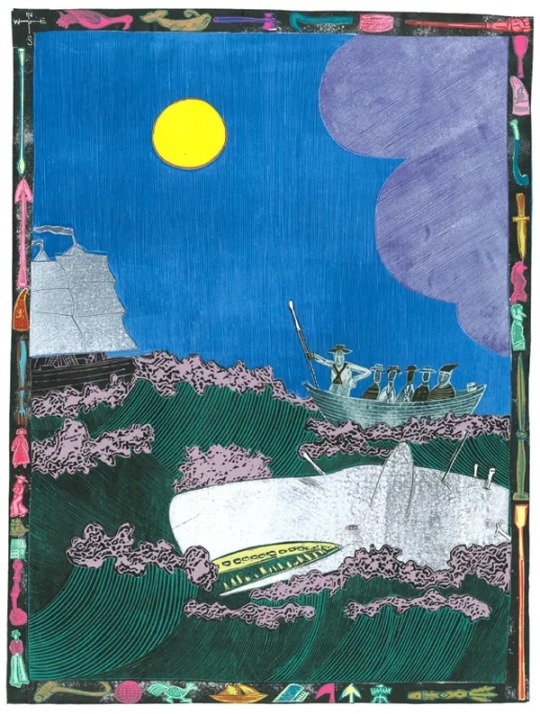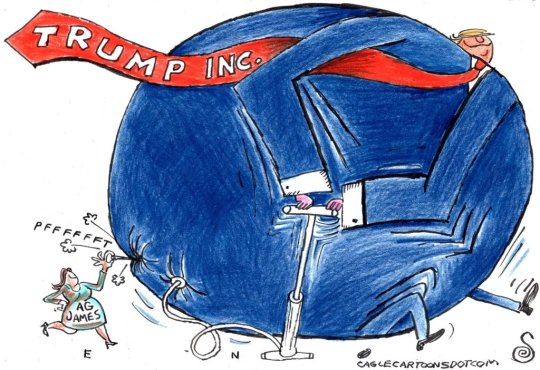#Randall Enos
Text
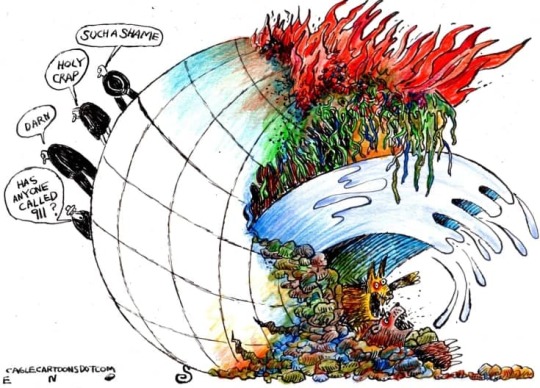
Randall Enos
* * * *
We are declaring a climate emergency. Everyone can, in whatever place on Earth they call home. No one needs to wait for politicians any more – we have been waiting for them for decades. What history shows us is that when people lead, governments follow. Our power resides in what we are witnessing. We cannot deny that Great Salt Lake is vanishing before our eyes into a sun-cracked playa of salt and toxic chemicals. Nor can we deny that Lake Mead is reduced to a puddle. In New Mexico a wildfire that began in early April is still burning in late July. Last August, the eye of Hurricane Ida split in two – there was no calm – only 190mph winds ripping towns in the bayous of Louisiana to shreds; and 7m acres in the American west burned in 2021. The future the scientists warned us about is where we live now.
The climate emergency has been declared over and over by Nature and by human suffering and upheaval in response to its catastrophes. The 2,000 individuals who recently died of heat in Portugal and Spain are not here to bear witness, but many of the residents of Jacobabad in Pakistan, where Amnesty International declared the temperatures “unlivable for humans”, are. The heat-warped rails of the British train system, the buckled roads, cry out that this is unprecedented. The estimated billion sea creatures who died on the Pacific north-west’s coast from last summer’s heatwave announced a climate emergency. The heat-devastated populations of southern Asia, the current grain crop failures in China, India, across Europe and the American midwest, the starving in the Horn of Africa because of climate-caused drought, the bleached and dying coral reefs of Australia, the rivers of meltwater gushing from the Greenland ice sheet, the melting permafrost of Siberia and Alaska: all bear witness that this is a climate emergency. So do we. Yet the anxiety we feel, the grief that is ours, pales in comparison to the ferocity of our resolve.
We can choose to live differently and build wiser and more just ways to produce, consume and travel. Our hope lies in our collective actions. A climate emergency means that it’s time for business as usual to halt, for our priorities to shift and to recognize our responsibility to those on the frontlines of the climate crisis. This emergency, which did not begin suddenly and will not end in our lifetimes, nevertheless needs our urgent response. This means doing all we can to stabilize the health of the planet and speed the transition away from fossil fuels. Now. Between the scientists and engineers, philosophers and poets, Indigenous leaders, climate activists and engaged youth, we know what to do and how to do it. We have a multiplicity of tools, we have a kaleidoscopic vision where each of us can offer up the gifts that are ours, and most importantly, we have the spiritual will to change the course of our destiny on fire.
The future needs us. We need each other. At a time when the majority of Americans want to see serious climate action, too many politicians have failed us and undermined those who are trying. We ourselves must respond for those who will be born next week and next decade and next century, who need a planet alive and flourishing in all its exquisite diversity of land and creatures and humans. We have no right to rob them or the young people staring at a chaotic future now of their birthright. We do not represent them, but we can represent ourselves, as people in solidarity with all life. In that spirit, we join those around the world who have already declared a climate emergency, and we invite everyone to join us.
Rebecca Solnit is a Guardian US columnist
Terry Tempest Williams is a writer, naturalist, and activist
#climate emergency#Randall Enos#Rebecca Solnit#Terry Tempest Williams#climate#activism#earth#Climate change
14 notes
·
View notes
Text


Meet Randal's dogman
Enoch bilingo dilingo papayason✨
Or Eno for short lol
(is oc)
104 notes
·
View notes
Text
@beatingheart-bride
Funny...he could swear he'd never met this woman a day in her life, and yet, when she said her name aloud, there was something about it that rang a distant bell in his head, though he couldn't say why...had he maybe read it somewhere, heard it somewhere?
Still, he set aside this feeling of deja vu to answer with a small smile, "Me? Oh, no, I'm a New Orleans native; born and raised, just like my ma!"
Born here, live here, will probably die here, he thought to himself wryly-he'd seldom left the city, let alone the state, and even then was something of a homebody. Unlike his old man, he couldn't exactly be described as a social butterfly, mostly content to keep to himself as he went about his day-sure, he went out; he went grocery shopping, went to the movies, spent his weekends trying to relax before the work week resumed, but one wouldn't catch him at any dance clubs or proverbial party centrals in town, that was for sure.
"Wh-What about you, Miss de Clair?" he asked, half-wondering he should call her "Emily", just as she called hm "Randall", as if they knew each other-maybe she knew something he didn't? "I, uh, I-I don't think I've ever seen you around before either-are you new in town?"
#((oh i think it will! again; emily won't blame them for fearing for their son's safety))#((when hanging around a vampire of all beings; but they'll still feel guilty for thinking the worst))#((of this woman who loves their son; and would never dream of hurting him; her vampirism be damned!))#((again; they can't be blamed-it's not like there were too many sympathetic/more benevolent vamps))#((in pop culture during the 70s; and with that as their only frame of reference))#((one can't blame them for assuming the worst of her; but i can still see them having a lot of regret))#((and wanting to make it up to her somehow-but honestly; i'm not sure how they'd do it!))#((got any ideas?))#outofhatboxes#beatingheart-bride#V:Dark Shadows
5 notes
·
View notes
Photo

Tom Sholz by Randall Enos.
Rolling Stone | October 30th, 1980
1 note
·
View note
Photo

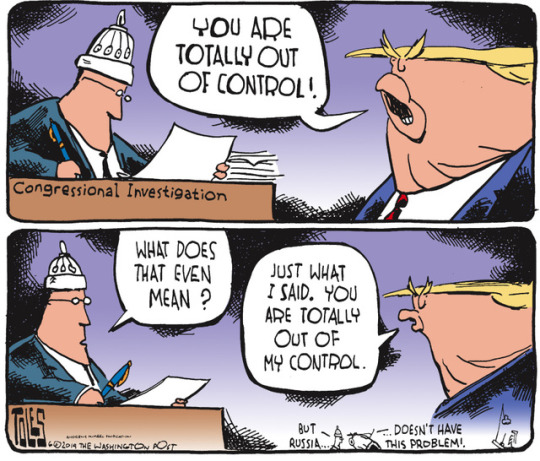
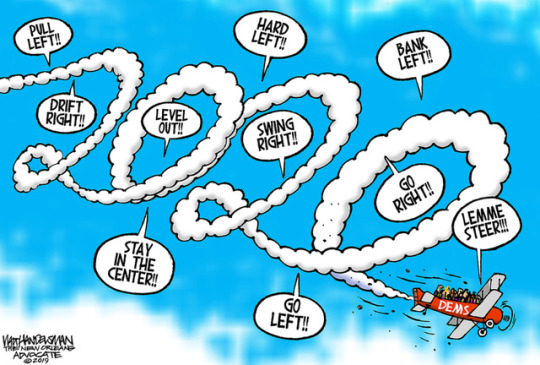
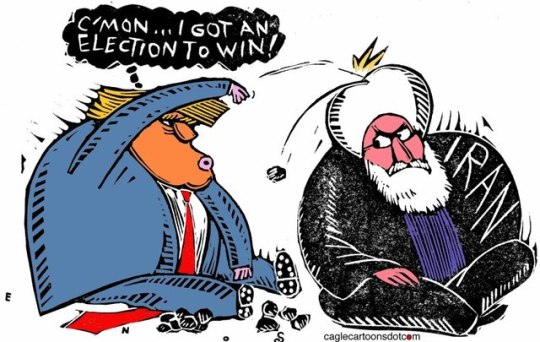


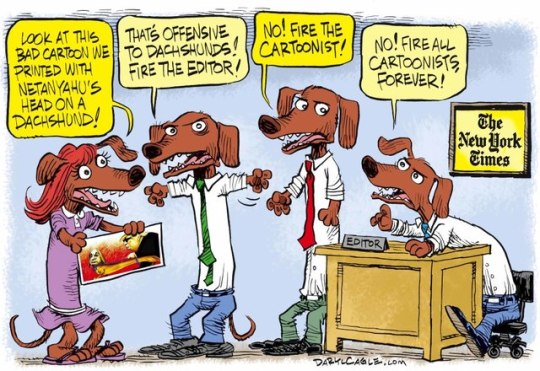
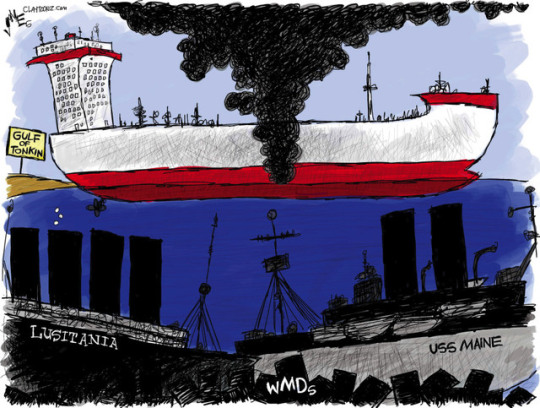

(via Cartoons)
#@TheWeek#editorial cartoon#Pat Bagley#Mike Luckovich#Tom Toles#Walt Handelsman#MBS#2019#2020 election#iran#randall enos#Bruce Plante#Daryl Cagle#hong kong extradition law
0 notes
Text
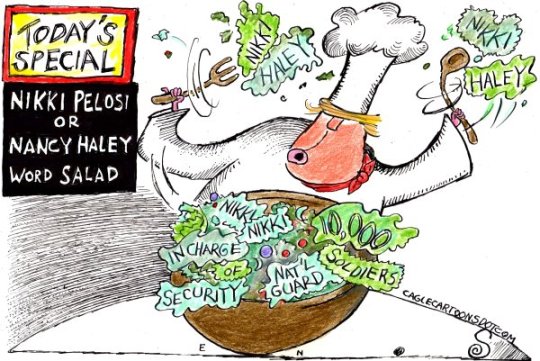
Randall Enos, http://caglecartoons.com
* * * *
"Person, woman, man, camera, TV."
January 23, 2024
ROBERT B. HUBBELL
On the evening before the first Republican primary (as opposed to a caucus), Donald Trump continued to show signs of mental confusion. The media yawned. You shouldn’t.
Background.
You will remember that retired Admiral Ronny Jackson served as the Physician to the President under Trump—and famously administered Trump a five-question memory test (“Person, woman, man, camera, TV”) when questions arose about Trump's health and mental fitness. Trump claimed that he passed the test with flying colors (“They say, ‘That's amazing, How did you do that?’”)
As a reward for giving glowing reports about Trump's health, Trump nominated Jackson to serve as Secretary of Veterans Affairs. Jackson’s nomination was withdrawn due to scandals surrounding Jackson’s management style. Jackson then ran for a seat in the US House. Jackson is currently a member of Congress from Texas.
[more]
Robert B. Hubbell
#Randall Enos#Robert B. Hubbell Newsletter#Robert b. Hubbell#TFG#cognitive decline#women's rights#election 2024#media
3 notes
·
View notes
Text
What A Relief
This month's faculty guest blogger, Peter Hoffer, talks about woodcuts and relief printing in "What A Relief"
Faculty Guest Blogger: Peter Hoffer Peter Hoffer: Relief printing, most commonly associated with a woodcut or perhaps a rubber stamp, works on the principle that what inks and prints remains uncut, or in relief. To some artists a woodcut is sadly anything but a relief, finding wood tedious and difficult to cut, especially when across the grain. Different kinds of wood—a softer wood such as pine…
View On WordPress
#Albrecht Durer#Antonio Frasconi#apprentice#backward#bath robe#German Expressionists#Helen Frankenthaler#Jim Dine#Leonard Baskin#linocut#linoleum#lithography#Peter Hoffer#Printmaking#Randall Enos#relief#Relief printing#Roy Lichtenstein#rubber stamp#screen printing#The Maslow Gallery#wood grain#woodcut
0 notes
Text
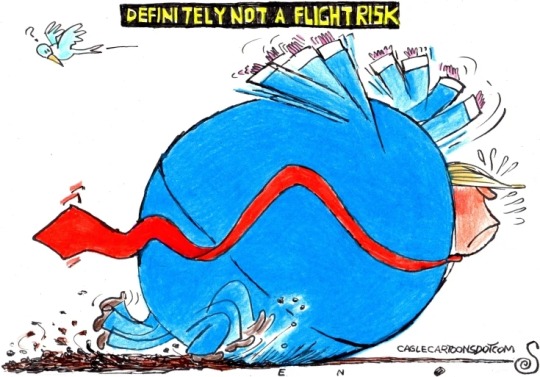
Cartoon by Randall Enos
7 notes
·
View notes
Text
Top reissues & compilations of 2018
Sebastian Gandera – Le Raccourci (Efficient Space)
Le Raccourci by Sebastian Gandera
Dave Bixby – Ode To Quetzalcoatl (Guerssen)
Ode To Quetzalcoatl by Dave Bixby
Brian Eno – Discreet Music (Virgin EMI Records)
Brian Eno - Fullness Of The Wind
youtube
Laurie Spiegel – The Expanding Universe (Unseen Worlds)
The Expanding Universe by Laurie Spiegel
Jess Sah Bi & Peter One – Our Garden Needs Its Flowers (Awesome Tapes From Africa)
Our Garden Needs Its Flowers by Jess Sah Bi & Peter One
Belong – October Language (Spectrum Spools)
October Language by Belong
Luciano Cilio – Dialoghi Del Presente (Die Schachtel)
Primo Quadro "Della Conoscenza"
youtube
Laraaji – Vision Songs - Vol. I (Numero Group)
Vision Songs Vol. 1 by Laraaji
Basa Basa – Homowo (Vintage Voudou)
Homowo by Basa Basa
Cabaret Du Ciel – Skies In The Mirror (Hybride Sentimento)
Cabaret Du Ciel - "Skies In The Mirror" (HYB.001) by Cabaret Du Ciel
Cindy Lee – Act of Tenderness (Maple Death Records)
Act Of Tenderness by Cindy Lee
Alvin Curran – Canti E Vedute Del Giardino Magnetico (Superior Viaduct)
youtube
Haruomi Hosono – Hosono House (Light In The Attic)
Fuku Wa Uchi Oni Wa Soto
youtube
John Beltran – Ten Days Of Blue (Peacefrog Records)
Ten Days Of Blue (Album) by John Beltran
Beverly Glenn-Copeland - Beverly Glenn-Copeland (Super-Sonic Jazz)
Beverly Glenn-Copeland by Beverly Glenn-Copeland
Mark Renner - Few Places (RVNG Intl.)
Few Traces by Mark Renner
Jacqueline Humbert And David Rosenboom – J.Jasmine: My New Music (Unseen Worlds)
J. Jasmine: My New Music by Jacqueline Humbert & David Rosenboom
Peter Zummo – Frame Loop (Foom)
Frame Loop by Peter Zummo
Various – Uneven Paths: Deviant Pop From Europe 1980-1991 (Music From Memory)
Uneven Paths: Deviant Pop From Europe 1980-1991 by Nightfall In Camp
Simon Finn – Pass The Distance (Antarctica Starts Here)
Jerusalem
youtube
Various – La Contra Ola - Synth Wave And Post Punk From Spain 1980-86 (Les Disques Bongo Joe)
La Contra Ola by Various Artists
The Scorpions & Saif Abu Bakr – Jazz, Jazz, Jazz (Habibi Funk Records)
Habibi Funk 009: Jazz, Jazz, Jazz by The Scorpions & Saif Abu Bakr
Carola Baer – The Story Of Valerie (Concentric Circles)
Carola Baer - The Story of Valerie by Concentric Circles
Happy Rhodes – Ectotrophia (Numero Group)
Ectotrophia by Happy Rhodes
Larry Chernicoff – Gallery Of Air (Incidental Music)
Gallery of Air by Larry Chernicoff
Randall McClellan – The Healing Music Of Rana Vol. 2 (Aguirre Records)
youtube
Carl Stone – Electronic Music From The Eighties And Nineties (Unseen Worlds)
Electronic Music from the Eighties and Nineties by Carl Stone
Inoyama Land – Danzindan-Pojidon (ExT Recordings)
youtube
Vainqueur – Reductions 1995-1997 (Scion Versions)
youtube
Colin Potter – A Gain (Joyful Noise Recordings)
youtube
Various – Disques Debs International Volume 1 (An Island Story: Biguine, Afro Latin & Musique Antillaise 1960-1972) (Strut)
Disques Debs International Vol. 1 by Daniel Forestal Et Sa Guitare
De Frank & His Professionals – Psychedelic Man (Les Mains Noires)
youtube
Jean Hoyoux – III Hymne (cortizona)
youtube
Ambienti Coassiali – Vol. 1 Rooms 1-6 (Incidental Music)
Vol. 1 Rooms 1-6 by Ambienti Coassiali
Terlu – Big Bingo (Not Not Fun Records)
Big Bingo by Terlu
Keysha / FG's Romance – Stop It! / What Is Love Today? (STROOM 〰)
Stop It! / What Is Love Today? by Keysha
EKUKA – Ekuka (Nyege Nyege Tapes)
EKUKA by Ekuka Moriss Sirikiti
#strut records#Habibi Funk Records#les disques bongo joe#antartica starts here#unseen worlds#RVNG Intl.#not not fun records#incidental music#les mains noires#ExT Recordings#aguirre records#Numero Group#concentric circles#Music From Memory#peacefrog records#super-sonic jazz#superior viaduct#vintage voudou#hybride sentimento#die schachtel#Spectrum Spools#awesome tape from africa
4 notes
·
View notes
Text
New top story from Time: COVID-19 Has Been ‘Apocalyptic’ for Public Transit. Will Congress Offer More Help?
While trying to get to work over the past few months, Brittany Williams, a Seattle home care worker, has often been passed by two or three buses before one stops to let her board. Buses in her area that once carried anywhere from about 50 to 100 passengers have been limited to between 12 and 18 to prevent overcrowding in response to coronavirus, and Williams’ commute, typically a half-hour ride, now takes more than double that time. Other Seattle transit riders have described budgeting as much as an extra hour per trip to account for the reduced capacity, eating into their time at work, school or with family.
Even with the ridership limits in place, Williams, 34, doesn’t feel safe on public transit. Some passengers don’t wear face coverings, and bus drivers sometimes ignore capacity limits, she says. On one ride with her seven-year-old son, she decided to get off at a stop far from her home after a driver allowed a crowd of people to board. “It’s very trying. I’ll put it in those terms,” Williams says. “These past couple months have been really hard.” (Seattle’s public transit operator, King County Metro, says it’s asking customers to allow for additional travel time, and that it has instructed drivers to call in more service on overcrowded routes.)
Adding more buses could help boost capacity while reducing overcrowding. But King Country Metro is in dire financial straits, making that next to impossible. System officials are projecting what they’re calling an “unprecedented loss” of more than a quarter of a billion dollars this year due to falling fare revenue and sales tax collections. While King County Metro received some federal aid for short-term survival, its prospects in the longer term are dismal, with the agency projecting more than $600 million in lost revenues through 2022. Last month, the agency announced fall service would be cut 15% from pre-coronavirus levels.
What’s happening to public transit in Seattle is happening across the country. Public transit use has plummeted nationwide as people work from home or avoid buses and subways for fear of contracting COVID-19, resulting in less revenue from fares. And as the economy cratered, so too have the tax revenues upon many which many transit systems rely. Philadelphia’s SEPTA is looking at upwards of $300 million in lost revenue through mid-2021. Maryland’s Transportation Trust Fund is contending with a $550 million shortfall in the fiscal year ending June 30, with similar losses expected next year. Los Angeles Metro is preparing for $1.8 billion in pandemic-related revenue losses. Chicago’s CTA is facing a half-billion dollar falloff in 2020. “I’ve been in this industry for over 30 years, and I have never experienced anything like what we’ve been dealing with in this pandemic,” says CTA President Dorval Carter, Jr. “There was no playbook for what we encountered.” In New York City, home to the largest transportation agency in the country, losses could add up to a staggering $8.5 billion in 2020. “‘Apocalyptic’ is a good description,” says Sarah Feinberg, who was appointed interim president of New York City Transit after the resignation of former president Andy Byford in January following repeated, high-profile clashes with New York governor Andrew Cuomo.
In these cities and more, public transit is the backbone of the local economy, and serves a wide swath of residents across socio-economic groups. If cities are to recover post-COVID, a thriving public transit system will surely have to be part of the mix.
Economically, U.S. public transit systems have endured a devastating one-two punch. Ridership rates have been decimated (subway ridership was down as much as 92% in New York at the height of the outbreak there) severely cutting into fare collections. And with the economy floundering more broadly, tax revenues that help subsidize transit systems have also taken a dramatic hit. But many transit systems’ costs are up as they engage in expensive cleaning campaigns meant to keep their buses and trains safe. Furthermore, many systems have been reluctant to cut service, which could result in dangerous overcrowding that could exacerbate viral spread.

David L. Ryan—The Boston Globe/Getty ImagesWearing a protective mask, Alejandra Ceja with S.J. Cleaning Services wipes down the window of a bus at the MBTA Charlestown bus garage during COVID-19 pandemic in Boston on May 15, 2020.
Some help has already pulled into the station. The CARES Act, a $2.2 trillion stimulus bill signed in March, included $25 billion for public transportation relief, which covered some of this year’s funding gaps. But as the COVID-19 crisis worsens in much of the country, it’s becoming clear that the nation’s transit systems will need more help from Congress. An independent analysis commissioned by the American Public Transportation Association (APTA), a non-profit advocacy group, found that, even after the CARES Act, public transit agencies nationwide still face a $23.8 billion shortfall through the end of 2021. “The CARES Act probably put a band-aid on the problem,” says Robert Puentes, president of the non-profit Eno Center for Transportation.
Another big issue with the CARES Act: the formula used to divvy out the funding gave enough money to smaller transit agencies to tide them over for a longer stretch of time, but left larger systems with only a few months of respite, according to an analysis by TransitCenter, a transit advocacy group. (That’s partially because larger transit systems tend to rely less on government funding, and more on fares and dedicated taxes, two income streams that the analysis projected would take a bigger hit during the pandemic.) Those major systems not only carry the most riders, some are also located in areas hardest-hit by COVID-19 early on, like New York and Seattle. For the 10 largest transit systems, the analysts estimated that the CARES Act funds would cover shortfalls for about five to eight months. In Seattle and New York City, which got 15% of the total CARES Act relief despite handling more than a third of national transit ridership, the funds were predicted to last less than six months.
More help from Washington could be on the way. Congress returned to work on July 20, and passing further COVID-related economic relief is top of mind for most lawmakers. But it’s unclear what the next major relief bill might look like. Back in May, House Democrats passed the $3 trillion HEROES Act, which included nearly $16 billion for public transit assistance, aimed primarily at the big systems that got relatively stiffed by the CARES Act. But Republicans called the bill a “liberal wishlist,” and the GOP-controlled Senate has refused to take it up. Republican leaders are expected to unveil their version of a relief bill as soon as this week. With August recess quickly approaching and plenty of political points on the line, it’s likely that Congress will pass some form of additional relief soon—what such a bill will ultimately include for buses, subways and rail is, at this point, anybody’s guess.
Not everybody is mourning the sorry state of American public transit. Some have long viewed it as a waste of government spending and resources, and say we’re better off letting it die. Transit opponents often point to data showing that national ridership had been slumping since 2014 as evidence that Americans were choosing other forms of transportation even before the pandemic, though the dropoff began to reverse last year.
“We had very strong trends before the pandemic that transit was becoming, outside of New York City, increasingly insignificant and irrelevant in America,” says Randal O’Toole, a senior fellow at the Cato Institute, a libertarian think tank. “What the pandemic has done is just underscored that and accelerated that and maybe in some places brought it to a final conclusion.”
But public transit’s defenders have a laundry list of reasons why it ought to be saved: it reduces the number of private vehicles on the road (generally meaning better air quality and less congestion); it results in fewer fatal car wrecks; and, when done well, makes urban mobility more accessible across socio-economic groups. “You can decry what you see as an inefficient system, but I don’t know how you have a functioning economy without people being able to get to their jobs,” says Beth Osborne, director of advocacy group Transportation for America.
For those who don’t rely on mass transit, heated debates over budget cuts, canceled routes and so on seem far afield. But transit is a lifeline for millions of Americans. Take, for example, the nearly half-million Chicago-area residents who live in “transit deserts.” Long before the pandemic, areas like the city’s Far South Side were starved for transit options, making it difficult for residents to get to work and access other essential resources. If Chicago’s CTA winds up reducing service even further because of COVID-related funding issues, advocates say, such a move could disproportionately affect people who’ve already been cut off from the rest of their city.
“If they cut service any more that would be a tragic thing for people who depend on transportation, not just to go to work but just to get to the grocery store,” says Andrea Reed, a transit advocate and co-chair of the Coalition for a Modern Metra Electric, a local advocacy group. “They can’t cut where people are already down and hurting.”

Christopher Dilts—Bloomberg/Getty ImagesA commuter wearing a protective mask looks at a mobile device while riding a Chicago Transit Authority (CTA) train in Chicago, Illinois, U.S., on Wednesday, June 3, 2020.
Any cuts in public transit service stand to disproportionately impact non-white Americans, who have already beared the brunt of the pandemic in so many other ways. People of color account for less than 40% of the U.S. population, but make up 60% of transit riders, according to the APTA. Further underscoring non-white Americans’ reliance on public transit, a CityLab analysis published in June found that, during a period at the height of the outbreak in New York, subway ridership dropped substantially more in whiter neighborhoods compared to less-white areas, perhaps because white New Yorkers were more likely to be able to work from home or afford alternate modes of transportation, like Uber rides. Furthermore, public transit has throughout the pandemic offered essential workers of color from doctors and nurses to kitchen staff a reliable way to get to their jobs; 67% of essential workers using transit are non-white, according to an April TransitCenter analysis.
With these disparities in mind, some transit agencies are trying to ensure equitable service amid the pandemic, despite the drain on their resources. Chicago’s CTA, for example, has been running at full service since the beginning of the outbreak in an effort to avoid overcrowding. “We had to make very tough operational decisions that were not necessarily in the financial best interests of the CTA, but were necessary because we recognize the importance of the people we were serving,” says Carter, the CTA president.
But good intentions don’t negate financial realities. “When the CARES Act money runs out, I don’t know what the system’s going to do,” says Stephen Schlickman, former executive director of the Regional Transportation Authority of Northeastern Illinois (RTA) which oversees the CTA. “This pandemic is clearly going to go into next year. The COVID money is expected to maybe stretch into early next year, so what happens after that? It’s a big unknown.”
Perhaps nowhere is public transit more vital, or the budget crisis more serious, than in New York City. The Metropolitan Transportation Authority, which oversees the city’s subways, busses and commuter rail lines, dwarfs other U.S. transit agencies in size, serving a colossal 40% of the nation’s total public transit users. Over the spring, New York City experienced what remains, for now, the worst coronavirus outbreak in the U.S.: more than 226,000 people have tested positive in the five boroughs as of July 20, and nearly 23,000 have died. Ridership in the city plummeted as people stayed home or sought out alternate modes of transportation they perceived to be safer. Furthermore, the city’s transit workers were hit particularly badly: more than 4,000 MTA employees have gotten sick so far, and 131 died. “It’s like being in a hospital, but without [personal protective equipment],” says MTA subway conductor William Mora, 50, who was out of work for a month with COVID-19; two coworkers he knew died of the virus.

The MTA received the most CARES Act money—$3.9 billion—of any public transit agency, but it was still shortchanged relative to its size, according to a TransitCenter analysis. The MTA, which anticipates a $10.3 billion loss through 2021, expects to burn through its CARES Act funds this month; it requested nearly $4 billion in more federal relief back in April.
“This is just the worst of all possible outcomes if we don’t get federal help,” says Andrew Albert, chair of the Permanent Citizens Advisory Committee to the MTA (PCAC) which represents riders’ interests. He cites the possibility of layoffs, service cuts, fare hikes or even abandonment of transit lines. “I just don’t want to anticipate what could be happening,” Albert says.
The pandemic struck just as the MTA was turning a corner. Subway on-time performance had been deteriorating for years. Safety was becoming an issue, too, underscored by a 2017 subway derailment that left 34 people injured. But just before COVID-19 struck, reliability was improving, with weekday on-time performance hitting 83.3% in January, up from a dismal 58.1% two years prior. A massive $51.5 billion capital investment plan went into effect at the start of 2020, $15 billion of which was to be funded by a new congestion pricing plan wherein drivers would be charged when entering the heart of Manhattan. But the pandemic and ensuing chaos has left that plan facing about a year of delays due to holdups over a Federal Highway Administration environmental review. Transit insiders say the New York system now stands to lose its recent progress.
“Right now we’re seeing that the region is coming out of pause, but the MTA is going into pause as relates to its construction program, and that could have even more long-lasting, dire consequences, not just for riders but for the entire economy of the region,” says Lisa Daglian, the PCAC Executive Director.

Robert Nickelsberg—Getty ImagesA passenger wearing a surgical mask a daily newspaper while riding an uptown subway in New York City on March 18, 2020.
Public transit’s future is equally uncertain nationwide. While it’s likely many systems will receive at least some federal help, that probably will not be enough to get them off life support, at least until some degree of normality returns. Despite studies that show fears of COVID-19 infection on mass transit could be overblown, it may not be until a vaccine is widely available that riders who have a choice between private and public transportation will feel safe enough to once again pack into buses and subway cars. “People are expected to keep away from each other, and that just doesn’t work out for mass transportation,” says Schlickman, the former Illinois RTA boss.
Some transit advocates see opportunity in this crisis. In an effort to free up badly needed public space for safe enjoyment of the outdoors, many cities across the U.S. and worldwide have closed some streets or entire areas to car traffic. As residents saw first-hand the benefits of having fewer cars around—more space, safer streets, less air and noise pollution—some cities have moved to make those changes permanent. Seattle, for instance, closed 20 miles of streets to most cars in May. Other cities are building or revamping their cycling infrastructure, opening up yet another form of transportation for many residents. “If we use this as an opportunity to do a makeover of our transit systems, our transit funding, and our transit infrastructure itself, we could come out of this exceptionally strong,” says Alex Hudson, executive director of Seattle-based nonprofit Transportation Choices Coalition.
But in general, the mood among transportation officials and advocates is far from cheery. Large systems still await short-term relief, while a gigantic new infrastructure proposal has stalled in a deadlocked Congress. Transit planners have little to go on in guessing when the money, and riders, will return. If transit systems are left to die, some say, their cities will die along with them. “New York city is tied to their transit system,” says Philip Plotch, a professor of political science at Saint Peter’s University and author of Last Subway: The Long Wait for the Next Train in New York City. “It’s like if you have a big hundred-story building and the elevators were having a problem.”
Plotch, who served as director of World Trade Center redevelopment and special projects at the Lower Manhattan Development Corporation, has watched his city recover from a devastating crisis before, and he’s optimistic it can do so again. “It wasn’t clear in the days after 9/11 if anybody wanted to work in a skyscraper ever again,” he says. “The people who had that sort of dark outlook were totally wrong.” But even if transit systems recover in the long-term, the millions of Americans currently relying on mass transit to get to work are desperate for those buses and trains to keep running.
“We depend on [transit] not just to go to our clients, but to do their grocery shopping, pick up their medicine…go out and pay their bills,” says Williams, the Seattle home care worker. “It’s a very dangerous slope if they take transit away. It’s part of what I would call another signature on the death certificates of thousands of Americans.”
via https://cutslicedanddiced.wordpress.com/2018/01/24/how-to-prevent-food-from-going-to-waste
0 notes
